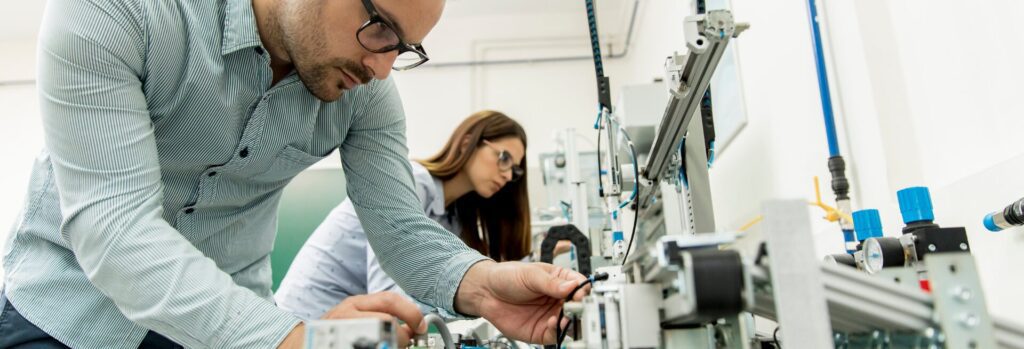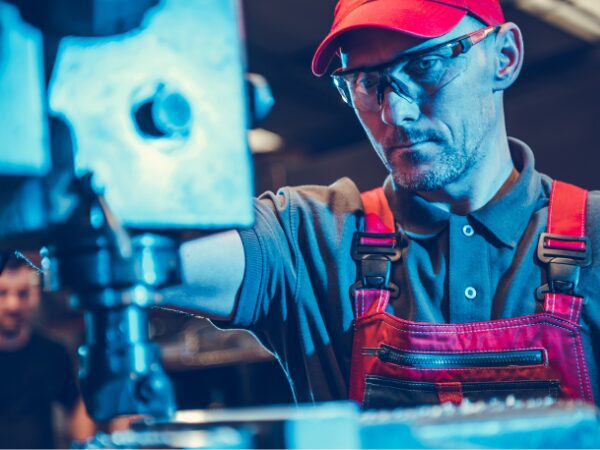Industry 4.0: Digital Transformation in Manufacturing
The Industry 4.0 represents a blend of two industries: information technology and manufacturing. ...

In the realm of technological innovation, few fields have transformed our world as profoundly as computer science and robotics. These two disciplines, once distinct, have converged in recent years to create a synergy that is reshaping industries, enhancing our quality of life, and pushing the boundaries of what’s possible. This article explores the dynamic relationship between computer science and robotics, highlighting their combined impact and the exciting potential they hold for the future.
In a seamless fusion of disciplines, computer science, the study of algorithms, data structures, and computational systems, has harmoniously integrated with robotics—an engineering branch dedicated to designing, building, and operating robots. This convergence has yielded remarkable strides across diverse sectors, including manufacturing, healthcare, space exploration, and entertainment.
The alliance between computer science and robotics is evidenced most prominently through the automation of industries. Robots, equipped with advanced sensors and AI algorithms, proficiently undertake complex tasks with precision, reducing the need for human intervention in hazardous or repetitive processes. This synergy has given rise to the paradigm of Industry 4.0, where interconnected systems in smart factories optimize production, heighten quality control, and minimize operational downtime. Furthermore, the healthcare landscape has undergone a profound transformation through computer science-driven robotics. Surgical robots, guided by real-time imaging and data analysis, enable minimally invasive procedures with unprecedented precision. Concurrently, robotic exoskeletons facilitate physical rehabilitation, enabling patients to regain mobility. The amalgamation of computer vision, machine learning, and robotics holds immense potential in revolutionizing global healthcare practices, from diagnosis to treatment and patient care.
The intersection of computer science and robotics extends even into the cosmic realm. With AI augmentation and advanced sensors, robots serve as the avant-garde of space exploration, navigating treacherous terrains on celestial bodies, collecting vital samples, and transmitting crucial data back to Earth. This collaboration between computer scientists and robotics engineers propels interplanetary discoveries, all while mitigating the risks associated with human exploration. From the cosmic vastness to the confines of our homes, the impact of this partnership is undeniable. Computer science and robotics are making significant contributions to daily life, from robotic vacuum cleaners enhancing cleanliness to intelligent home assistants simplifying tasks. Powered by AI algorithms, these domestic robots seamlessly interact with humans, showcasing the symbiotic relationship that defines the future of these two dynamic fields.

However, while the integration of computer science and robotics promises immense benefits, it also presents challenges. Ensuring the ethical and responsible use of AI-driven robots, addressing concerns about job displacement due to automation, and addressing potential security vulnerabilities are among the issues that need careful consideration. The future directions of this collaboration are incredibly promising. As AI becomes more sophisticated, robots will become better at understanding and responding to human emotions, enabling more natural interactions. Swarm robotics, where multiple robots work together like a coordinated group, could lead to advancements in disaster response and environmental monitoring. Furthermore, the melding of virtual reality and robotics could redefine telepresence and remote operations.
The synergy between computer science and robotics is undeniably shaping the future. Their integration has resulted in remarkable advancements across various domains, propelling humanity toward a new era of technological innovation. As researchers, engineers, and visionaries continue to push the boundaries of possibility, the collaborative efforts of these fields will undoubtedly yield even more astonishing breakthroughs, enriching our lives and expanding the horizons of human achievement.
Companies that are innovating in this sector are likely to be eligible for several funding programs including government grants, and SR&ED.
Want to learn about funding opportunities for your project? Schedule a free consultation with one of our experts today!
Sources:
[1] – https://ieeeaccess.ieee.org/tag/robotics-and-automation/
[2] – https://blog.robotiq.com/whats-the-difference-between-robotics-and-artificial-intelligence
[3] – https://ifr.org/worldrobotics
Explore our latest insights
More arrow_forward
The Industry 4.0 represents a blend of two industries: information technology and manufacturing. ...

Provincial governments are slowly unveiling their provincial budgets outlining fiscal strategies ...

Recently, Canadian representatives attended COP27 to discuss the actionable steps to implement to...

Human-Machine Collaboration has become an essential part of the manufacturing industry. This coll...